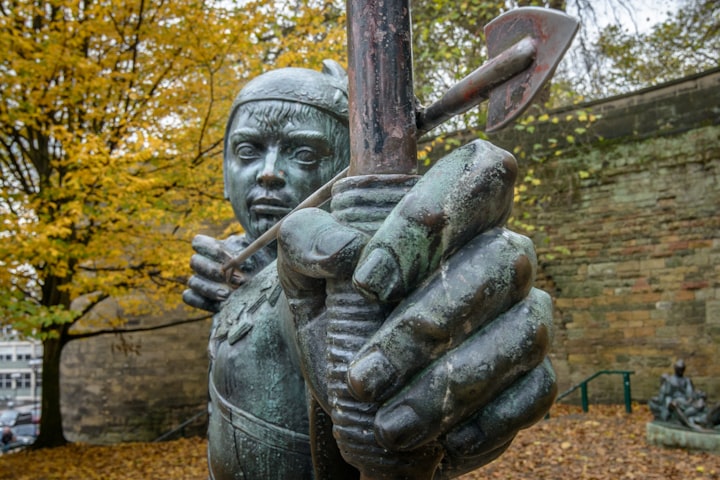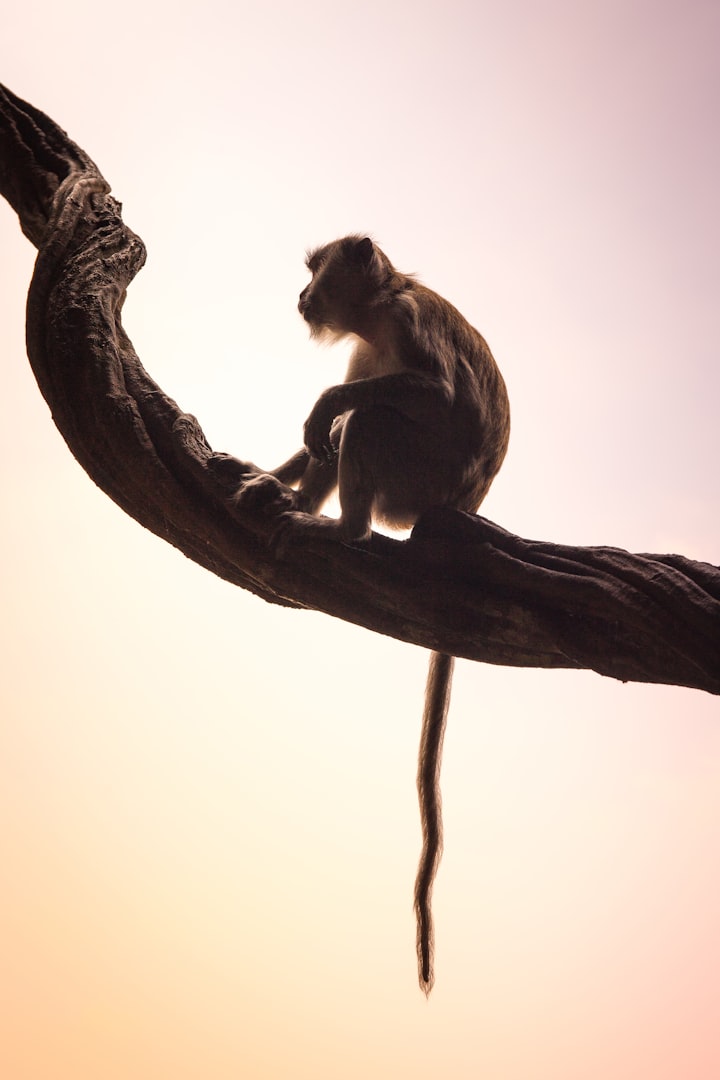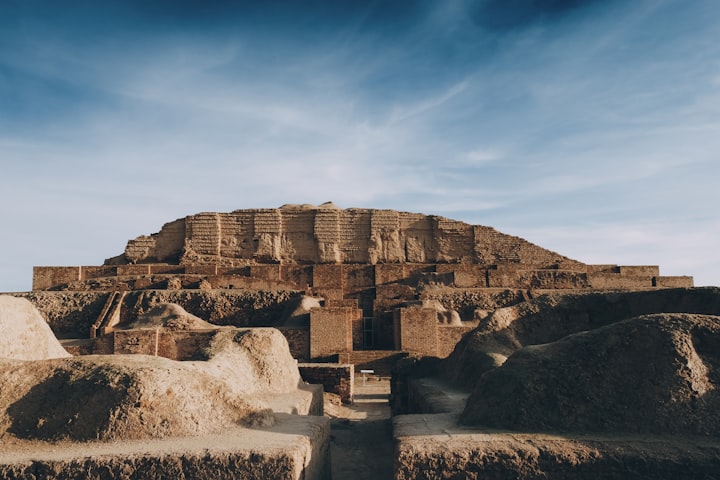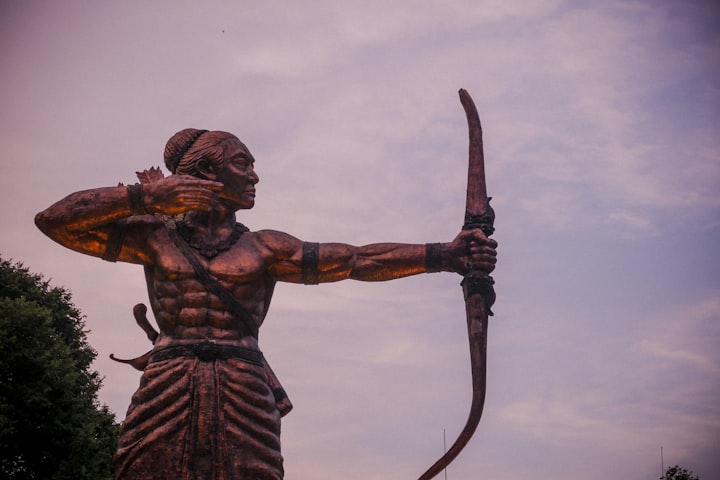The History of Archery
Origins of the Bow and Its Significance Throughout Time

Some of my fondest memories of childhood are learning how to shoot a bow from my father, and the joy I felt as I improved my archery skills over time, coming closer and closer to hitting the bullseye. At twenty-six years old, I still practice archery as both a method of exercise and as a source of relaxation. In our modern society, archery is practiced by millions of people all over the world primarily as a competitive sport or as a hobby. However, archery has played a variety of essential roles throughout human history the practice had such a significant influence on the development of civilization that that the invention of the bow and arrow has been compared to the invention of fire. From a tool of survival to a weapon of war, the bow has been humanity’s faithful companion since before we took our first steps out of Africa. Over time, the role of archery would extend beyond its practical uses and the bow come to play significant cultural roles in almost every society that used it.
The Origins of Archery: What We Know So Far
Although archaeologists know that humans were consistently using the bow and arrow as far back as 9,000 years ago, it has been difficult to trace the exact date when archery first originated. This is because the most definitive evidence of the practice, bows and arrows, are primarily made from organic materials that will decay rapidly unless they are preserved in very specific environments, such as arid deserts or waterlogged bogs. It is the frustrating truth that archaeologists must often rely on the pure luck of someone happening to leave their bow or arrow in a protective environment that will hopefully preserve these objects for the next thousand (or a hundred thousand) years or so. Understandably, direct evidence of archery becomes more and more scarce the further back in time one looks.
However, archaeologists have been able to find indirect evidence indicating that archery was likely being practiced in Africa as far back as 72,000 years ago, where multiple arrowheads made with animal bone were discovered in a South African cave. Interestingly, these arrowheads are believed to have been tipped with poison. If this is the case, this may suggest that the technology of the bow and arrow was around long enough by this time for ancient humans to already be experimenting with different ways to increase the effectiveness of their arrows. Archaeologists have also recently discovered arrowheads in Sri Lanka dating back to 48,000-years-old, which indicates that archery was being practiced outside of Africa millennia ago and that the widespread use of the bow and arrow likely dates back to the earliest eras of human history. Currently, the oldest complete bow and arrow was found in Denmark dating back to 11,000 years old. However, archaeologists have found wooden fragments in Germany that may be the remains of a bow and arrow dating back to 17,500 – 18,000 years old, which could push the history of archery in Europe back another 6,000 years.

Although bows and arrows have been used by almost every major society in history, archaeological evidence indicates that the practice didn’t suddenly develop all over the world at the same time. Rather, individual cultures appear to have sporadically incorporated the bow and arrow into their toolkits at various times throughout history. At an overview, here’s when the practice of archery began in different parts of the world based on current archaeological evidence:
Africa: 72,000 – 5,000 years ago. Current evidence indicates that archery was practiced in South Africa possibly as far back as 72,000 years ago, but it did not spread to other parts of Africa until later. Evidence for archaeology in the Saharan Desert, for example, has only been found for as far back as 5,000 years ago.
Europe: at least 11,000 years ago definitely, possibly even as far back as 17,500 years ago.
America: between 12,000 – 1,300 years ago. Similar to Africa, individual tribes adopted the use of the bow and arrow at different times, creating a vast temporal range of when archery began on the continent.
Asia: 48,000 – 10,000 years ago. The oldest evidence of archery outside of Africa was found in Sri Lanka dating back to 48,000 years ago. Current evidence suggests that the bow and arrow were being used in China by 14,000 years ago and evidence of archery in Japan dates as early as 10,000 years ago.
Australia: 18th century AD. Interestingly, Australia is the only continent in the world that has been consistently populated since the Paleolithic Age where the people living in the region did not develop a form of archery themselves. Before the arrival of the Europeans, Australian Aboriginals primarily used spears and boomerangs for hunting and warfare.
Although individual societies began using the bow and arrow at different points in history, the practice quickly became one of the most dominant implements in their toolkit. As a result, would come to play a variety of roles in the development of that culture and human history.

Archery As A Tool of Survival
As long as archery has been around, one of its primary uses has been to hunt animals. The invention of the bow and arrow provided early humans with a hunting tool that was faster and had a longer range than many of the weapons they had been using, such as spears or darts. This allowed ancient people to hunt small, fast prey that would have been difficult to take down with their larger weapons. In ancient China, records indicate that hunters favored the bow when hunting prey such as birds, as arrows were often more effective than slower weapons like nets and spears. Correspondingly, some archaeologists believe that the 48,000-year-old arrowheads found in Sri Lanka may have been made to hunt agile prey that would’ve been difficult to kill with spears, such as monkeys and squirrels.

In addition to allowing early people to hunt smaller prey, the range and speed of the bow and arrow provided a safer way to hunt larger animals as well because it allowed hunters to attack them from longer distances while still making accurate shots. This is demonstrated in places like Spain and Russia, where early cave paintings depict people using archery to hunt large, horned animals that likely would have been too fast or dangerous to hunt at close range. Similarly, hunters in the most ancient civilizations such as Sumer, Egypt, and India, heavily relied on archery to hunt dangerous predators such as lions and alligators. As such, the invention of the bow and arrow likely allowed people to hunt a larger variety of animals. This would’ve had a direct and significant influence on the availability of food and could’ve contributed to the influx of population that would eventually lead to the development of the first civilizations in history.

Archery As A Weapon of War
Although hunting has been one of the primary roles of the bow and arrow throughout history, archery has been at the forefront of human conflict for just as long. Archaeologists found 10,000-year-old human skeletons in Kenya with obsidian arrowheads embedded in their skulls, and some of the oldest depictions of conflict in the world are Spanish cave painting that show people fighting each other with bows and arrows. Correspondingly, archaeologists have found evidence that Paleolithic Europeans were regularly using the bow and arrow in their interpersonal conflicts as far back as 7,000 years ago.
The invention of the bow and arrow introduced one of the world’s first type of long-range artillery. Before the bow, the primary tools for long range artillery were the slingshot and the atlatl. While powerful enough in their own right, neither tool could throw projectiles as far as the bow could. As a result, battles could be fought from a distance and soldiers could damage the enemy without endangering themselves in close-quarters combat. Unsurprisingly, many of the first civilizations in human history heavily relied on archery as the backbone of their armies: the Sumerians, Persians, and Egyptians all made constant use of archers in the conflicts that built their empires. An infamous example of this is the Battle of Kadesh. Fought in 1274 BCE between the Hittites and the Egyptians, the Battle of Kadesh featured Pharoah Ramses II (known as Ramses the Great) and 5,000 – 6,000 archers riding in chariots. The importance of the bow and arrow in ancient warfare is further corroborated by the plethora of art made by these ancient societies which depict kings, warriors, and soldiers engaging in combat archery both on foot and in chariots.

Corresponding to its essential role as long range artillery, the bow and arrow became a focus for military innovation. Ancient tacticians experimented with ways to increase the strategic effectiveness of the bow in battle by pairing it with other innovations, such as riding in a chariot while firing arrows at the enemy. In other cases, cultures experimented with the design of the bow itself. The invention of the composite bow, which is made from multiple pieces of material glued together rather than one large piece, introduced a type of bow that was more powerful and weighed less than previous iterations. When paired with methods of transport, such as horseback riding or chariot riding, it became a devastating weapon on the battlefield. As a result, the composite bow was the mainstay of the dominant societies in the ancient world, such as the Persians and Egyptians. In ancient China, the crossbow appears during the Warring States period as opposing factions develop deadly technology and complex battle strategies in their fight for dominance.
The use of archery for military innovation extended well beyond the first civilizations. During the Hundred Year’s War between France and England, the English gained a substantial advantage over the French when they introduced the longbow to the field. Medieval castles would be constructed with “murder holes” where the archers could rain down arrows on attacking armies. When medieval Italians began using introduced their own version of the crossbow in battle (they likely got the technology from China), it gave them a devastating advantage over their opponents.

Combat archery’s influence on the course of human history was not restricted to military inventions, however. The bow and arrow were also instrumental in the political landscape as well. In particular, mastery of the bow and arrow allowed minority societies to challenge dominant empires with much bigger armies. An infamous example of this happened when King Darius of Persia tried to invade Scythian lands in 512 BCE. Although Persia was the dominant power in the known world at the time, the Scythians were able to drive back his army by using tactically their mounted archers to outmaneuver the Persian soldiers and defeat them without ever engaging in direct combat. A thousand years later, the Huns rose out of central Asia as a little-known tribe of nomadic people. Due in no small part to their mastery of horseback-mounted archery, they were able to conquer half of Europe and trigger the fall of the Roman Empire. The Mongolians, as many history-lovers know, are yet another tribe of nomadic people skilled in mounted archery that would conquer much of Asian and Europe. Like the Huns, they also began as a relatively unknown nomadic tribe. At its height, the Mongol Empire was the largest contiguous land empire in history. Archery would continue to dominate battlefields all over the world until the invention of firearms.

Archery as a Medium of Culture
Although the bow and arrow primarily functioned as a tool of life and death, the importance of archery in human history extended well beyond its practical uses and took on cultural significance as well. Corresponding to its essential role in the cultures that relied on archery for food and protection, the bow and arrow appeared in the religious beliefs of many ancient societies. Ninurta, the Mesopotamian god of thunderstorms, agriculture, and war, was often depicted carrying a bow and arrow. In Egyptian mythology, the symbol of the warrior goddess Neith was two crossed arrows, and the deity herself was often depicted carrying the weapon. In Greek mythology, at least four deities, such as Artemis and Cupid, were associated with archery. In addition, several heroes and demi-gods, such as Hercules and Atlanta, utilized the bow and arrow in their exploits. Ancient societies in Asia, such as China and India, also included deities that either excelled in archery, or were symbolically associated with the bow.

Along with being directly associated with the deities of many ancient cultures, the bow and arrow also became a symbolic focus for rituals and spiritual beliefs in other societies. The bow and arrow play a role in the beliefs and rituals of many Native American tribes, such as the Navajo and the Lakota, who used archery related imagery to symbolize concepts such as war and peace. Other cultures, such as the Chinese and Japanese, have developed specific rituals for the practice of archery that are not necessarily religious, but are spiritual in nature.
The cultural influence of archery extended into political and social aspects of cultures throughout history. In Mesopotamia, Egypt, and Macedonia, kings would demonstrate their military prowess and royal power by hunting lions with a bow and arrow. The nobles and royals of ancient India and China also engaged in bowhunting as a way of demonstrating their combat prowess and elite authority, and in Japan the military capabilities of a samurai were measured by their mastery of the bow. Interestingly, in some ancient societies the elite would demonstrate their combat prowess by refusing to use the bow and arrow when hunting dangerous prey and by killing the animals with a knife or a spear instead. The bow and arrow were also a focus for creativity, as archery featured in the art of many societies throughout history. In other societies, folktale heroes such as Robin Hood and William Tell have inspired people for hundreds of years.

Corresponding to how the bow and arrow became a part of the societies that relied on archery, the cultural aspects of those communities were also incorporated into the bows themselves. So much so, in fact, that bows and arrows made by different cultures are unique enough for experts to categorize and identify archery-related artifacts based on the society that created them. This is because the needs of a society and how they utilized their bow, as well as their preferences for certain colors or shapes, had a significant influence on how bows were designed and decorated. A Mongolian composite bow looks completely different from an English longbow because they were designed to be used in different ways. However, a Mongolian bow can be differentiated from a Scythian composite bow, even though both tribes used horseback-mounted archery, because the preferences and culture of each society influenced how they designed their bows. Even a group’s natural environment influenced the design of their bow. The wood of an English Yew tree, for example, would not behave in the same manner as the bamboo that the Japanese used to make their bows would. As such, the way individual societies designed their bows was naturally influenced by the environments they lived in. Just as archery was incorporated into many aspects of a culture, the bows themselves reflected important details about the lives of the people that made them.

A Lasting Impact
The impact that archery has had on the course of human history extended well beyond the ability to kill from a distance. From a symbol of elite status or an instrument for toppling empires to a spiritual focus and a reflection of culture, the bow and arrow have played a role in almost every major aspect of our past. Although the invention of firearms triggered a world-wide decline in archery for a time, the bow and arrow have made a significant comeback in the last two centuries and many of the roles archery plays in contemporary society parallel how it was used throughout history.
While the major religions of modern times do not worship divine archers, ritualistic archery is still practiced in countries such as Japan. The bow and arrow also continue to be a medium of cultural identity as many cultures that have continued into modern day, such as the Hungarians, Tibetans, and Native Americans, practice archery as a form of upholding their society’s traditions. Rather than being a symbol of elite class, contemporary archery practiced by people of all backgrounds and, instead of being a measure of military prowess, it is more often correlated with athletic ability. Sport archery is so popular, in fact, that a number of archers today have made their careers as athletes and archery is one of the official categories of the Olympic Games. As humanity continues to grow and change in the future, the bow is likely to remain our swift and sure companion.
About the Creator
Deianira Morris
A freelance writer fascinated with learning about life and the history of life.





Comments
There are no comments for this story
Be the first to respond and start the conversation.